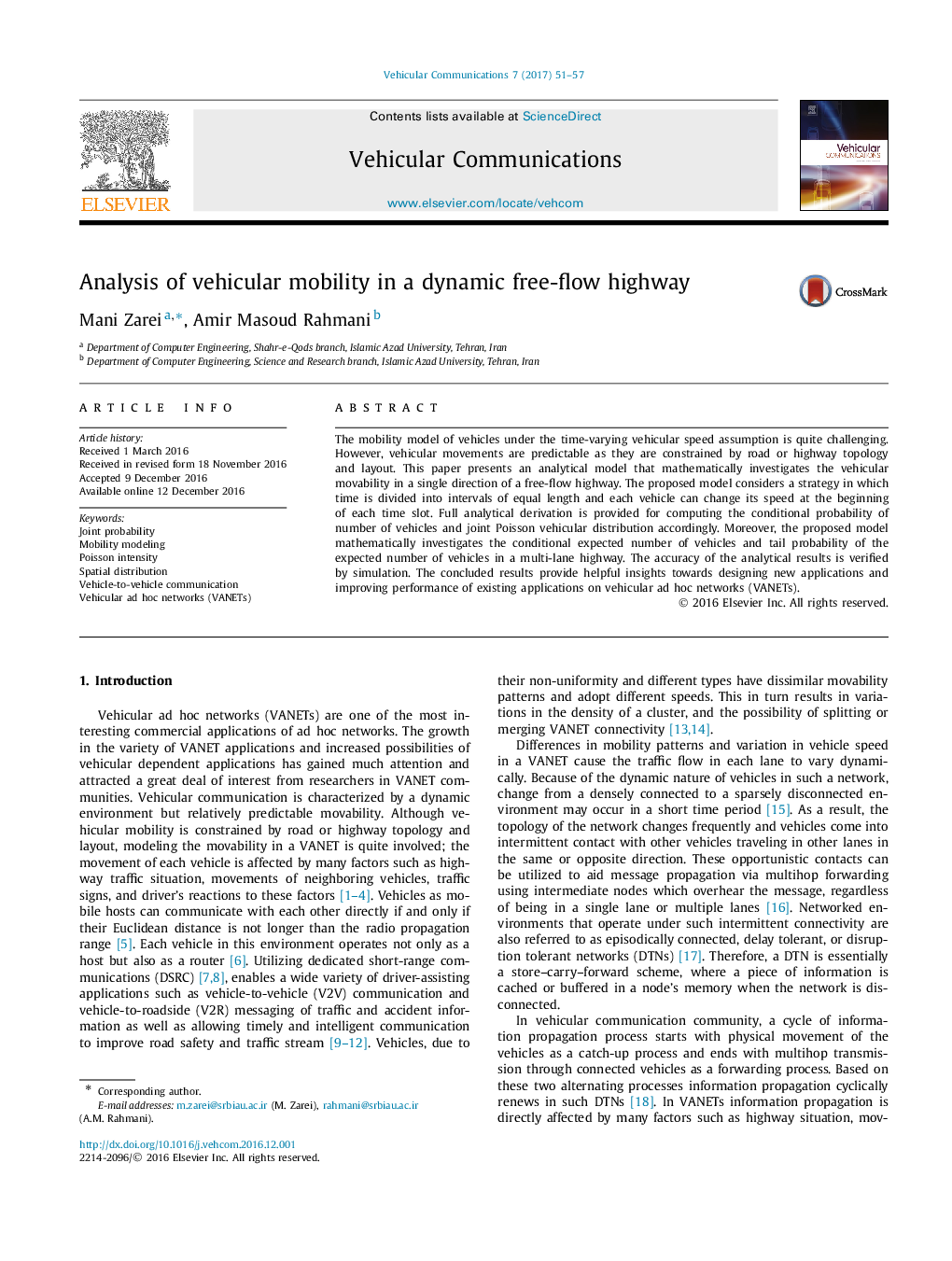| Article ID | Journal | Published Year | Pages | File Type |
|---|---|---|---|---|
| 4957824 | Vehicular Communications | 2017 | 7 Pages |
The mobility model of vehicles under the time-varying vehicular speed assumption is quite challenging. However, vehicular movements are predictable as they are constrained by road or highway topology and layout. This paper presents an analytical model that mathematically investigates the vehicular movability in a single direction of a free-flow highway. The proposed model considers a strategy in which time is divided into intervals of equal length and each vehicle can change its speed at the beginning of each time slot. Full analytical derivation is provided for computing the conditional probability of number of vehicles and joint Poisson vehicular distribution accordingly. Moreover, the proposed model mathematically investigates the conditional expected number of vehicles and tail probability of the expected number of vehicles in a multi-lane highway. The accuracy of the analytical results is verified by simulation. The concluded results provide helpful insights towards designing new applications and improving performance of existing applications on vehicular ad hoc networks (VANETs).
